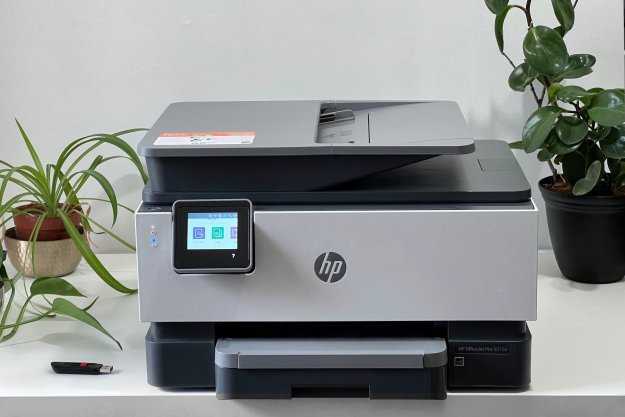
The United States Postal Service is a perfect example of technology eradicating human jobs. The organization’s current state brings to mind age-old conspiracy theories about robots replacing grocery clerks, bus boys, tailors, and of course, postmen. And now it looks like that prophecy might be coming true: The USPS recently announced that email has been its death sentence. “Mail volume declined by more than 43 billion pieces in the past five years and is continuing to decline… and letters bearing postage stamps declined 36-percent in the same time frame, and nearly 50-percent in the past 10 years.”
And the USPS makes it clear where you can place blame. “Customer preferences have rapidly evolved and new technology has changed how Americans communicate and transact business…the model has faltered.”
Maybe we let it die. Survival of the corporate fittest. Other businesses have had to adapt their strategies to evolve along with the technological times, why shouldn’t the post office? And if it can’t, then maybe that just means we’ve outgrown an outdated service. They seem to think so themselves: “For most businesses, there is nothing exceptional [about] adapt[ing] to technology and market changes. Unlike most businesses, however, the Postal Service is attempting to meet its 21st century challenges with a business model suited to the last century — one that does not acknowledge that a fundamental change has taken place.”
When you put it that way, the USPS sounds pretty doomed. But while telecommunications may have brought us to this postal predicament, they might also be able to bring us out of it.
The post office’s solution is primarily focused on massive, sweeping job cuts, which are likely to make the business less efficient. And let’s be honest, efficiency and trouble-shooting aren’t exactly what the postal service is known for. While downsizing is likely unavoidable, there are a few thoughts on how today’s technology could bring new life to the industry. There is no quick-fix here obviously, but new innovation could revitalize what’s being seen as the digital age’s latest victim.
Get with the times. For one, the USPS might want to look at the Fedex business model. When was the last time you went into a United States Post Office? Probably awhile. And it probably felt like you were stepping backwards into time. Where is the Wi-Fi connection? The wireless printers? The computer stations? We’ll find convenient workarounds if they aren’t there, and the USPS currently isn’t providing them on a wide-scale basis.
Retrain your troops. Were USPS locations to become more focused on communications solutions, some staff could be retrained in the IT arts. The biggest problem mail faces is the huge layoffs it’s predicting, but at least some of this could be staved off by putting a segment of employees through training to help consumers with their mailing needs in store and over the phone. Customers could create USPS accounts, where they could upload content (like photos) they want to print and send (this might sound silly, but people still do it – and they use FedEx or UPS). And if your mom wants to send those baby pictures to your aunt, she might require minimal assistance figuring that out.

Don’t beat email – be email. Trying to beat email is just a losing battle. If we’re going to get really Orwellian (and libertarians are going to want to stop reading now), the USPS should get into the email and online storage game – at some point. As a semi-independent federal agency, the post office could use this position to distinguish itself from competitors and focus on converting the Outlook crowd (who are already looking for free options). It could become about communications in all their forms – including email and sharing via the cloud. You could begin using this as your official email – it would be like when you got your first library card.
Team up with online retailers. Sites like Amazon and eBay do serious business, and all of their goods need to get somewhere. And while these are ingenious solutions for a host of purchasing needs, dealing with shipping and handling can send you to a variety of different sites (your bank account, PayPal, back to eBay, on to FedEx…) and ultimately into the physical store. If the USPS were to form a partnership with a big online retailer to include in-house service for shipping and receiving your sold and bought goods, it would undoubtedly win over users who prefer face-to-face help with it comes to this sort of thing.
Take a page from competitors. Obviously the Internet is doing something right – so why not see what it has to offer? There are services like Zumbox which scan physical content and send it electronically. What about using the QR code fanaticism to give customers a way to track their sent mail? Special envelopes could include QR codes and this could take you to a page that is updated allowing you to watch your mail in transit. Updater is an online application that gives you options for changing addresses and redirecting junk mail — the USPS could make an application like that and include it with its own list of services. It’s beginning to take a cue from competitors with new online options, but this should only be the beginning of what’s possible.
[Correction]: Zumbox representative Marissa Meyer explains the system works a little differently than we originally thought. “Zumbox diverts documents headed for the print stream and sends them digitally – that means for customers using Zumbox, if they choose to go entirely paperless – a paper version of their mail would never be created. There are other companies such as Earth Class Mail, that do ‘scan and send physical mail.'”


